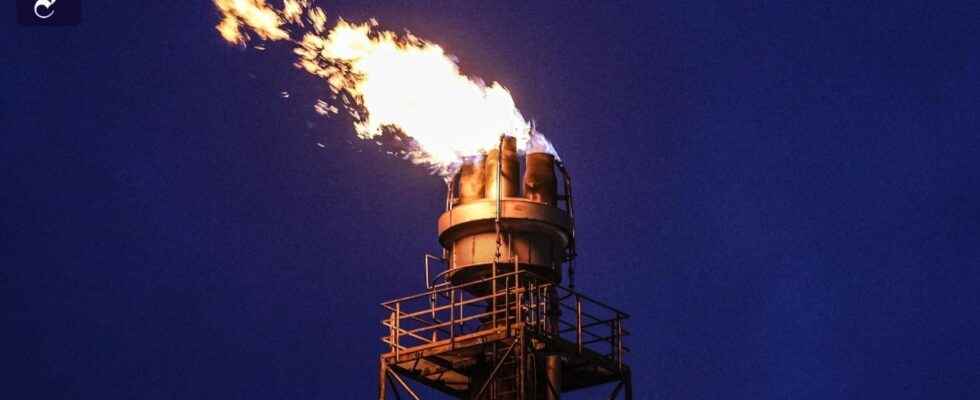AThe photo shows a huge flame rising high above the forest: Finnish public broadcaster Yle used this image to illustrate a report this week that Russia has started burning larger quantities of gas that can no longer be sent to Europe is delivered.
The flame appeared on June 17 at the Portovaya compressor station near the Finnish border, shortly after the Kremlin-controlled gas company Gazprom had significantly reduced deliveries to Germany through the Nord Stream 1 pipeline for the first time – to first 60, then 40 percent of the capacity. Gazprom is now only allowing 20 percent of the possible gas volume to flow through the pipeline, which starts in Viyborg near Portovaya.
In the report, Yle refers on the one hand to eyewitnesses such as the author of the photo, a man from Hamina on the Gulf of Finland, who stated that the flame was clearly visible from the Finnish coast near the Russian border in the evening. On the other hand, the transmitter relies on data from the American space agency Nasa. Their global fire monitoring service “Fire Information for Resource Management Systems” shows fire near the Portovaya station from mid-June, i.e. from the time Nord Stream 1 deliveries were throttled. Gazprom has so far left an inquiry from the FAZ unanswered; there is no official information about what Gazprom will do with the excess gas.
Individual wells closed?
But the Russian storage facilities should have been filled to the hilt by now. And without European customers, to whom around 83 percent of Russian natural gas exports went before the war against Ukraine, Russia has hardly any sales opportunities: Unlike oil, which can be shipped by tanker, Russia relies on pipelines to transport natural gas.
Since there is only one pipeline to China so far, which is not yet fully resilient, Russia cannot sell the excess gas to Asian customers. This is leading to a dramatic slump in gas exports – in July they were 58 percent lower than in the same period last year, but also to a significant drop in gas production: According to Gazprom data, in July it was 36 percent below that of the same period last year and thus at a minimum level since 2008.
This suggests that Gazprom may have already started shutting down individual wells. Making these functional again later is considered to be extremely difficult and expensive.
Moscow had reduced gas deliveries to Germany in mid-June, citing a missing Siemens turbine in Portovaya, which was stuck in Canada after maintenance due to western sanctions. According to the federal government and Siemens, however, this is not a reason for the delivery reduction, since six more turbines are ready in Portovaya, of which only one is currently in operation. Gazprom claims the five idle turbines will also have to go to Canada for maintenance and is demanding written guarantees that the maintenance will take place unpunished by sanctions.
If there is no such guarantee, gas deliveries would probably continue at the current low level, said Katja Yafimava from the Oxford Institute for Energy Studies of the FAZ, until the last turbine “reached its limit”. However, the reduced deliveries are already having an impact on the Russian economy: the gross domestic product fell by 4.9 percent in June, after a minus of 4.3 percent in May.
